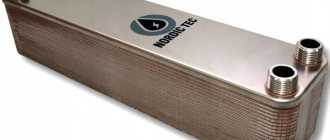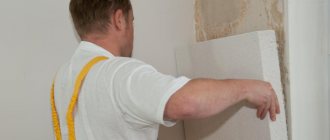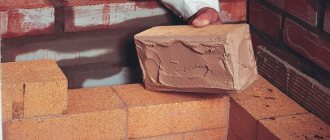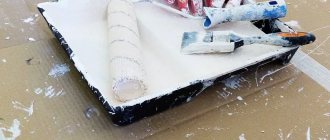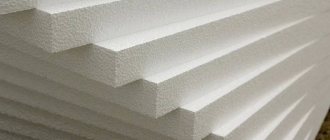Polystyrene foam is foamed polystyrene; accordingly, it is dissolved by the same organic solvents as monolithic polystyrene. And this is almost any “aromatic” and heterocompounds: toluene, dichloroethane, acetone, ethyl acetate, etc. Depending on the thickness of the resulting solution, it will be either “glue” or “paint” (thinner). The only thing you need to remember is that all polystyrene solvents are toxic, so you need to work either in a gas mask or with excellent forced ventilation if you do not want health problems.
First of all, you should put gloves on your hands, and then carefully pour the xylene into a plastic container.
After that, you need to dissolve the foam in it. There should be so much polystyrene foam in relation to the chemical liquid xylene that when it dissolves there and you stir this mixture, it would seem to you that you are dealing with thick sour cream.
Then you need to add golden powder and color and wait 10-15 minutes so that it dries a little and everything dissolves in it and it becomes acceptable in its thickness. If after 15 minutes it is liquid, then wait another 10 minutes and then it should definitely become acceptable for painting wood or metal.
DIY foam paint
Today we will consider an experiment with ordinary polystyrene foam. Surely everyone has a lot of this “good” in their home, country house, perhaps in the garage or on the balcony.
To make paint we will need:
— Container for paint,
— You can also add bronze powder for shine.
Pour xylene into a plastic container. Add unnecessary pieces of foam. It is better to work with gloves.
You can use any foam: from household appliances, furniture, tools, etc.
When the foam dissolves, mix well and wait until it becomes transparent. You need to add enough polystyrene foam to make the mixture as thick as sour cream.
Now add any color.
This paint dries quickly (in 10 - 15 minutes). If the mixture turns out to be liquid, let it sit for a while and start painting.
You can paint any surface: wood, metal, etc. In our version, we will conduct an experiment on metal and wood.
Degrease the surface first!
You can use a brush or roller. In our version we use a brush. You can see that it is better to still use a roller.
This paint can also be used to paint wood; it is very durable and easy to make. If you liked our advice, don’t forget to share it on social networks.
How to make paint from foam plastic video
In recent years, foam products have begun to be used in all spheres of human life. Most often they are used in construction, and not only as insulation. For example, decorative elements in the form of ceiling skirting boards and tiles made from this material are popular. Since polystyrene foam is produced exclusively in white, many buyers think that it is not suitable for decorating their interior. Luckily, there are ways to paint foam board and give it a look that matches the overall decor of the room.
What type of foam can be used to create glue?
Foam plastic is a group of materials that are foamed masses. Most often they are used for thermal insulation of premises. Depending on the production method, they are divided into 3 main types:
- Pressless. Such products look like a lot of interlocking balls. When such products are physically impacted, the balls are easily separated from each other and the product begins to crumble. This type of foam is most often used to create glue. It easily dissolves in gasoline and acetone and turns into a stretchy mass.
- Pressed. This foam is more durable and does not crumble like the previous type. This is explained by the fact that during production the products are pressed.
- Extrusion. This material has a more uniform structure, since during production the temperature of the products increases. The result is foam plastic, which has a solid structure.
Advantages of painted material
Polystyrene foam is a very popular material in construction; it is used for both external and internal work. However, after some time it may lose its attractive appearance. In addition, the initially white decor may not match the color scheme of the room. These reasons force craftsmen to paint materials in a shade suitable for the interior.
Due to the fact that some compounds can destroy the structure of polystyrene foam, before starting work it is important to figure out what paint to paint it with. Foam plastic will retain its attractive appearance for a long time if this work is done correctly. In this state it will have more advantages:
- it will be protected from moisture, dust, grease stains and other aggressive influences;
- polystyrene foam that turns yellow over time will not become noticeable under a layer of paint;
- painting will make everyday care easier;
- the decor will harmoniously fit into the design of the premises.
How to paint a concrete floor with polystyrene foam varnish - see in this video:
The material is very light and easy to work with, so it is used by professionals and home craftsmen. It is widely used not only in interior decoration of premises. Elements made of foam plastic often decorate the facades of buildings, gardening areas, and insulate the facades of buildings with slabs. With the use of coloring agents you can realize many original ideas.
A correctly chosen coloring composition can keep structures and decorative items beautiful and attractive for a long time. In this form, they will be less sensitive to sunlight and other destructive factors.
Paint selection criteria
Foam products are sensitive to paints and varnishes. For this reason, you should carefully consider how to paint polystyrene foam so that it retains its appearance for a long time. Since this material does not tolerate acetone and other solvents, experts advise choosing water-based products. Such coatings are called water-dispersion. They can be:
Since foam does not tolerate solvents, the paint must be acrylic or water-based
- water-based;
- acrylic.
Any type of paint must meet basic requirements:
- it should fit well on the work surface;
- have high density and water resistance;
- be resistant to chemical influences.
All these parameters must correspond to the operating conditions of foam products.
However, not all foam items can be painted. The restriction applies, for example, to laminated plastic ceiling tiles. It just needs to be installed correctly, and it does not need painting.
see also
Comments 56
This is not entirely normal... It gives away schizoy.
This method sucks.
crazy... see a psychiatrist urgently
I had it like this for half a month. and then it cracked and everything fell off.
5000r?! It makes sense to make such a floor if it costs 300 rubles. This color is water soluble. I think it greatly reduces the strength of this substance. A methyl methacrylate self-leveling floor for this area will cost a little more, but the quality is incomparably better.
Characteristics of coloring compositions
The range of coloring products is quite large. According to experts, it doesn’t matter what kind of paint you use to paint the foam, as long as it is water-based. This is due to the fact that the type of polymer almost does not reflect its properties. However, in order for the painting to be done efficiently, you should know the advantages and disadvantages of the compositions used.
The best paint option for polystyrene foam is acrylic.
Among the water-dispersed group of paints, acrylic paint has performed very well. This coating has the following positive properties:
- reliable protection against ultraviolet radiation;
- long service life;
- dries quickly and has no odor;
- health safety;
- ease of application;
- easy to clean if necessary;
- resistance to pollution;
- the composition is not affected by high temperature;
- a wide variety of shades.
Painted foam is easy to clean
In addition to the listed advantages, this coloring material has the only drawback - it is high cost. However, it is fully justified by significant advantages. A high-quality composition cannot be too cheap.
In addition to acrylic paints, you should pay attention to water-based coatings. They also have good properties. Among the advantages:
- environmental friendliness;
- lays down smoothly and has no odor;
- good vapor permeability;
- large color palette;
- average cost.
The qualitative characteristics of this coating are inferior to the acrylic composition. It has several significant disadvantages. The paint has low resistance to stains and does not tolerate moisture well. Over time, its surface is washed off with water. If you apply it in large quantities, it may peel off. However, despite all these disadvantages, water-based emulsion is quite in demand among consumers.
The advantages and disadvantages of coloring agents will help you decide which paint is best to paint polystyrene foam.
Indoor work
The process of coloring foam products consists of several stages. Before you paint the foam, you need to prepare it. A primer is used for this. An aerosol composition is best suited for this purpose; it is simple and easy to apply to the desired object, the surface dries quickly and can be ready for subsequent work in a short time. This product is ideal for priming the desired element indoors.
Before you start painting parts, you need to prime them with an aerosol composition.
At the very beginning of work, you need to clean the surface with a damp cloth and wait until it is completely dry. When using an aerosol primer, it is recommended to shake the bottle for a few minutes before application and then coat the material with it.
The composition is sprayed quickly, applying a thin layer at a distance of 20 cm from the product. 3-5 layers of primer are enough to get a high-quality coating. After this, the material must dry completely. This takes approximately 30-30 minutes. Various irregularities or drips can be removed with a spatula, lightly touching the surface.
How to make glue
Creating glue is quite simple:
- First you need to find a solvent and pour it into a small container. The size of the container depends on the amount of glue you are going to receive.
- Solvent must be poured into the container. Many people use gasoline to produce glue from the described material.
- After this, it remains to lower the material into the solvent until a viscous substance is formed in the container.
This composition is suitable for fastening various parts and, after hardening, holds them securely for a long time.
You can use a brush to apply glue. For example, such compositions are often used to coat damaged areas of roofing or joints of roofing material. After hardening, the material dissolved in gasoline resembles glass.
There is another way to create the described adhesive composition. To prepare the substance, some homeowners place crushed foam in the area that needs to be covered with glue. After this, it is wetted with gasoline or another solvent. As a result, the material melts and is evenly distributed over the surface. The composition quickly fills all cracks, thanks to which it reliably seals them.
Sequence of actions during operation
To paint the outside and inside, select the desired type of composition. After choosing, you can start painting the product yourself. The easiest way to do this is to use a product in an aerosol package.
To paint polystyrene foam with your own hands, it is best to choose spray paint
Before starting work, shake the can for 1-2 minutes and then evenly cover the surface from a distance of 30 cm in 2-3 layers. Each time it must dry and only then can the next layer be applied. This method is considered the simplest if you learn how to work with a cylinder.
If the composition in a jar is used, painting is done using a brush or roller. The required amount of water is added to the paint to achieve a suitable consistency. If several tones are used, the composition should be mixed well before coating to obtain an even color. If the elements are painted in different colors, then the brush must be rinsed well with water each time.
To consolidate the result, you can use varnish. A special water-based varnish is often used in combination with acrylic paint to further protect the surface of the foam.
Making varnish: instructions
To prepare paint and varnish, you should take 70-100 ml of xylene, pour it into a container, occupying approximately 1/3 of its volume. To further reduce the cost of the material, you can combine xylene and acetone (gasoline) equally, or then dilute the thick ready-made varnish with inexpensive solvents. Afterwards the procedure will be as follows:
- Take polystyrene foam and break it into small pieces. The finer the crumble, the faster the dissolution process will occur. The approximate amount of foam is 0.3 cubic meters. dm.
- Press down the foam with a wooden stick so that the pieces are immersed in the liquid. The material will immediately begin to dissolve and gas bubbles will appear on the surface.
- You can add more polystyrene foam so that the consistency of the product resembles sour cream or liquid honey. High-quality varnish flows from the stick like a thread and does not separate into drops.
- Cover the varnish with a lid and leave for 20-60 minutes to infuse. The color should remain transparent.
- Strain the container through cheesecloth. Pour the clean composition into a new container that has a stopper and lid.
Brushes or spatulas are used for varnishing. You can simply pour the paintwork onto the surface and smear it with movements in different directions. The drying time for this product is 5 minutes after application at room temperature. The product can be used after an hour, when complete curing is achieved.
It is recommended to use the finished product for the following purposes:
- varnishing of wooden products;
- increasing the moisture resistance of concrete;
- coating of any painted objects.
You can also make other paints and varnishes using foam varnish. For example, if you introduce small wood shavings into it, you will get a reliable putty for holes, chips, and cracks. You can also make a conductive varnish. To do this, special fine-grained components are introduced into the composition, which, after polymerization, form a film with excellent electrical conductivity. They are usually used on metal, glass, plastic, and wood.
For 100 g of finished paintwork material, add 15 g of powdered silver and fine-grained graphite. Mix the product well until a dark, thick liquid is obtained. Before use, the varnish should be shaken thoroughly so that heavy particles do not settle down.


